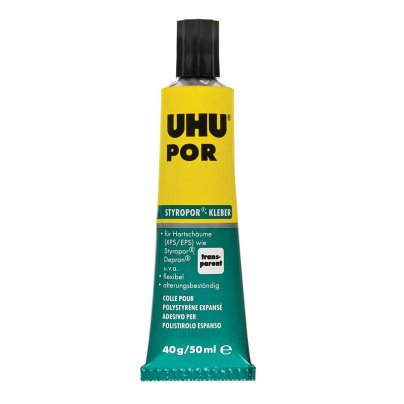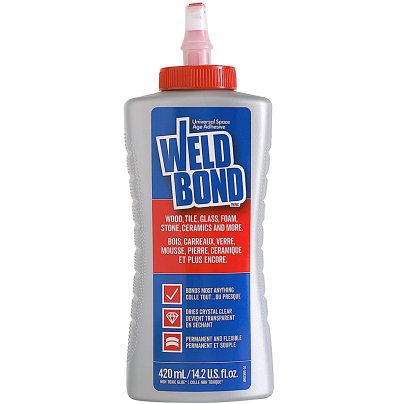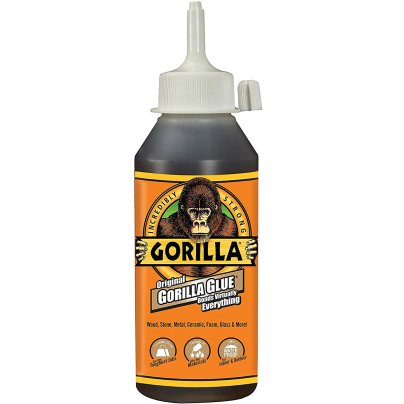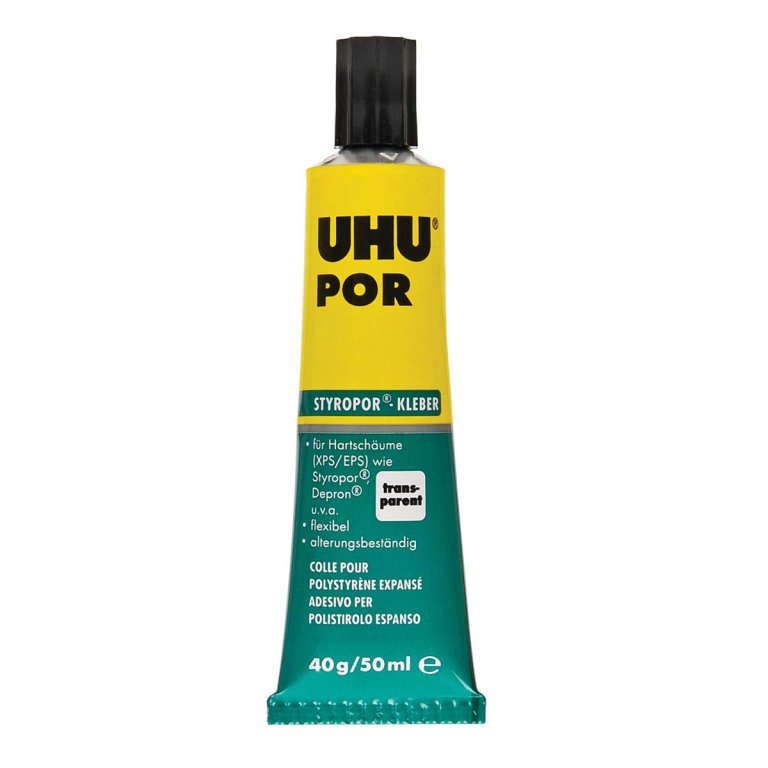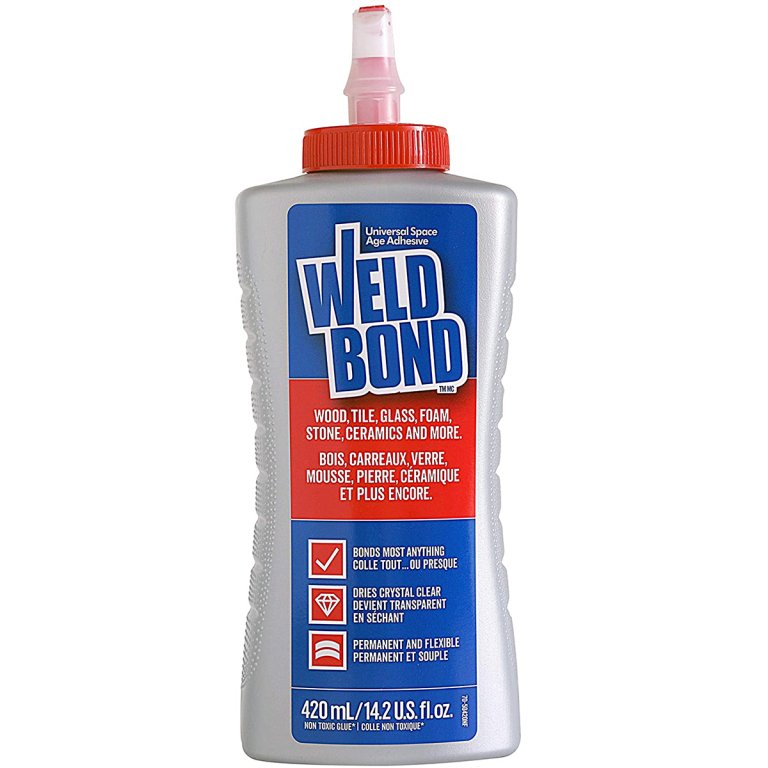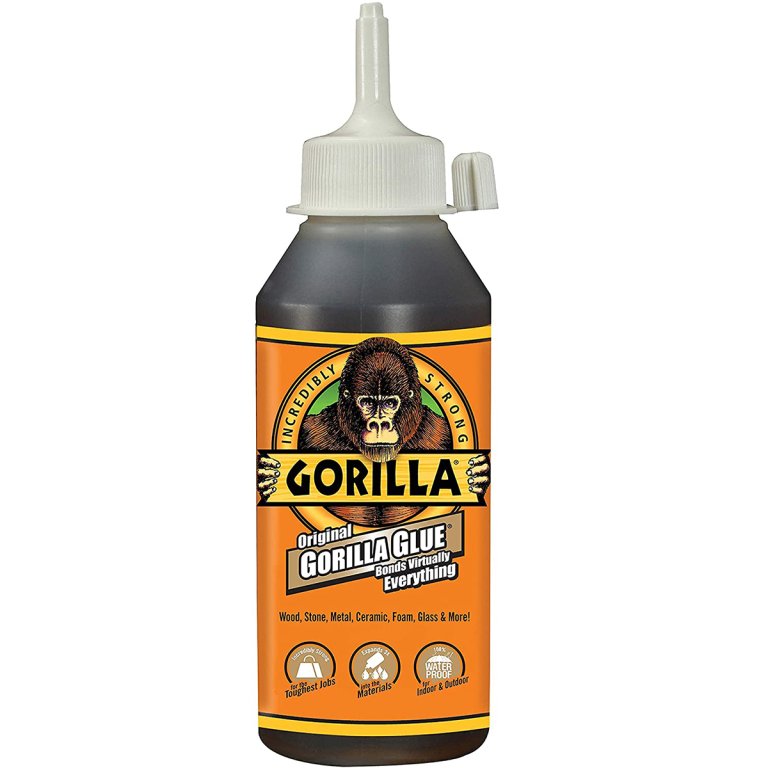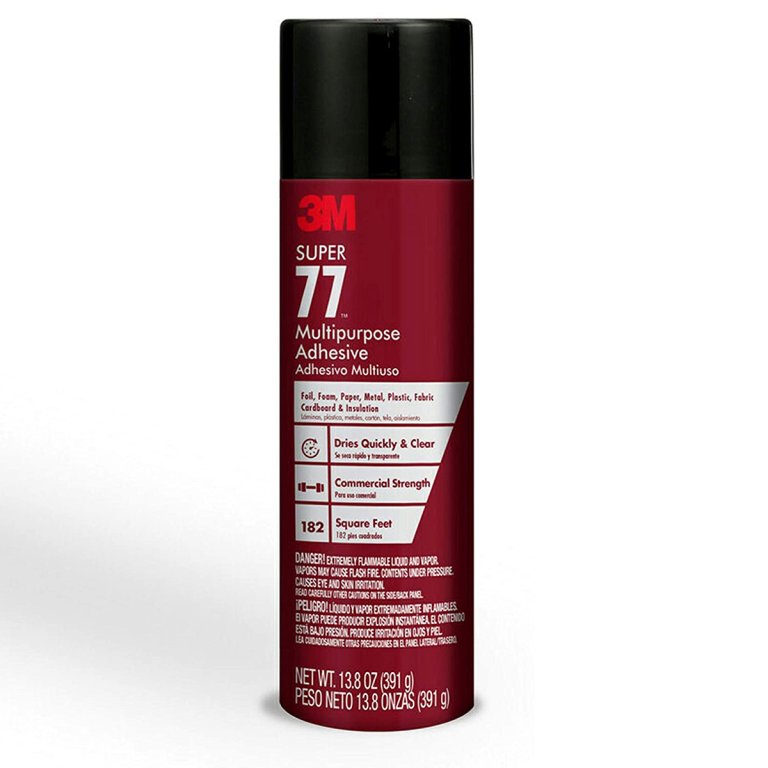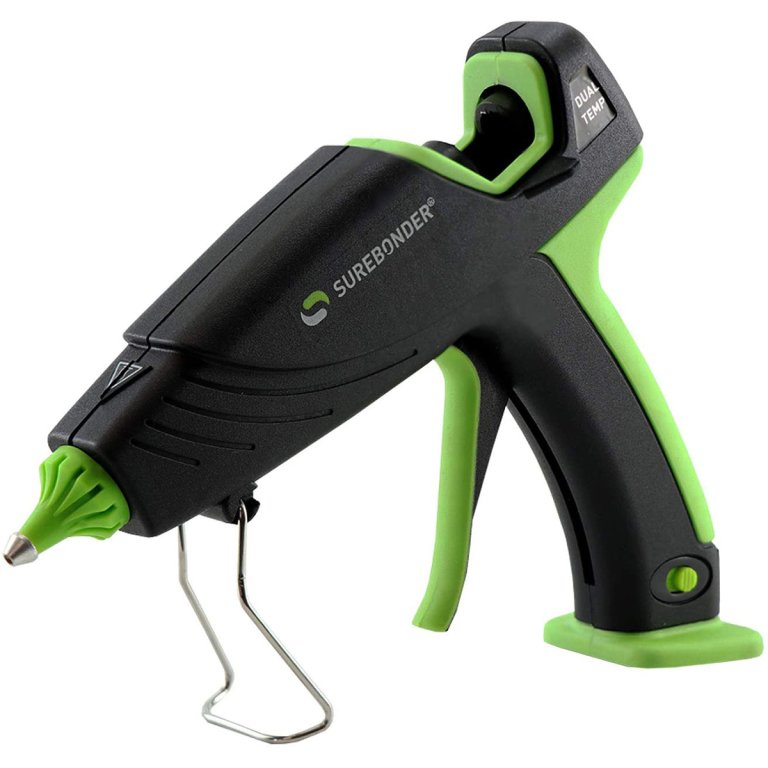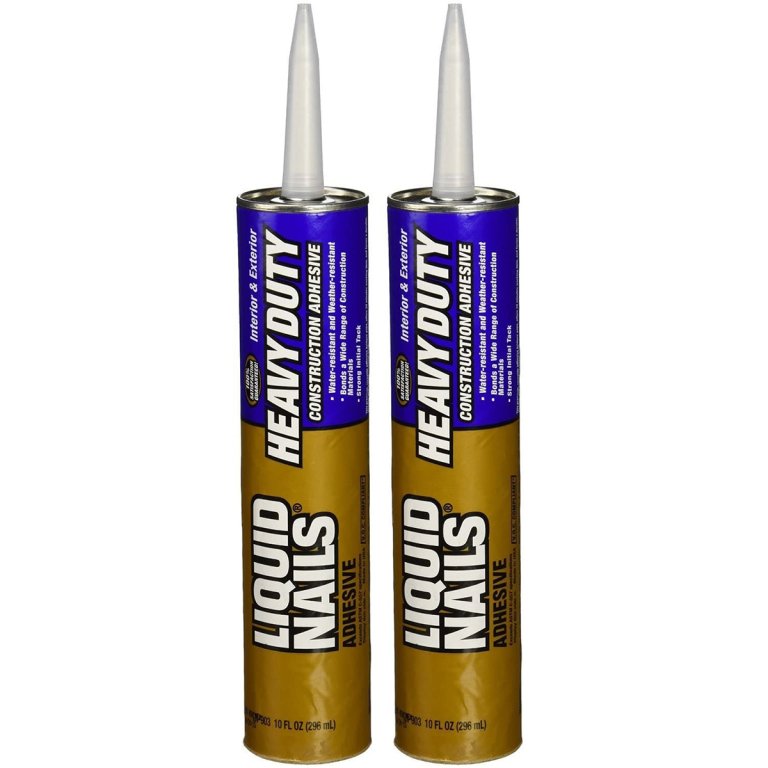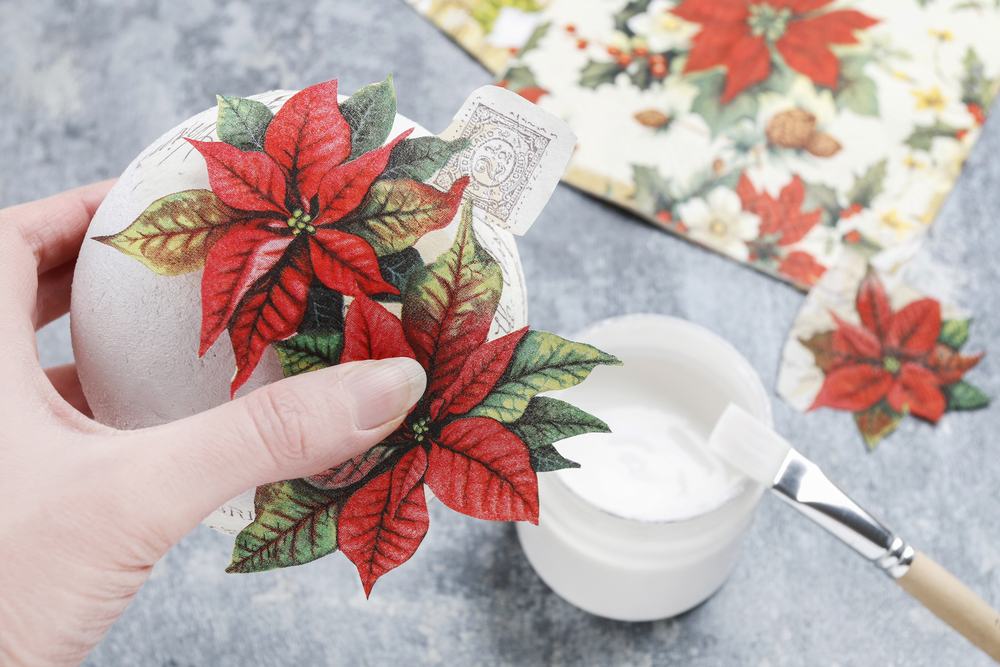
We may earn revenue from the products available on this page and participate in affiliate programs. Learn More ›
Using the correct glue for styrofoam makes it easier to create crafts and hobby projects. The wrong glue on styrofoam not only creates a bad bond, but some glues even can melt or dissolve this delicate material. A good styrofoam glue is safe to use on styrofoam, but it should do more than simply ensure your project sticks together. The top options are easy to apply, smell pleasant, and dry to an attractive finish. Moreover, the best glues for styrofoam create a better bond.
Hobby styrofoam is a polystyrene foam that’s made of plastic and contains air to make it lightweight. While the two terms are often used interchangeably (including in this guide), most materials referred to as “styrofoam” are solid polystyrene foam. “Styrofoam” is a trademarked brand of polystyrene usually found in commercial settings. Many foam glues can work on both types.
- BEST OVERALL: Uhu POR Styrofoam Adhesive
- BEST BANG FOR THE BUCK: Weldbond Multi-Purpose Adhesive Glue
- BEST ALL-PURPOSE GLUE: Gorilla Original Glue
- BEST SPRAY: 3M Super 77 Multipurpose Spray Adhesive
- BEST HOT GLUE GUN: Surebonder Ultra Series Dual Temperature Hot Glue Gun
- BEST HEAVY-DUTY: Liquid Nails Heavy Duty Construction Adhesive
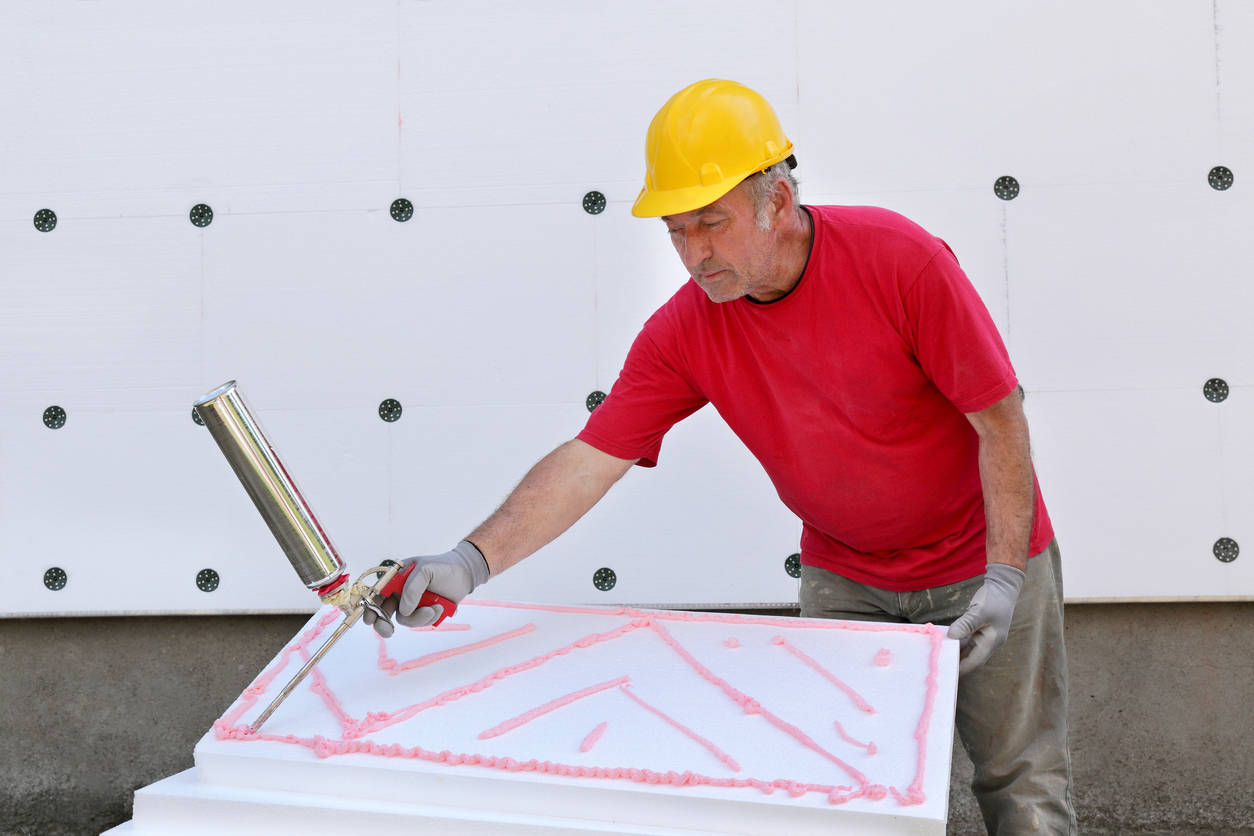
Types of Glue for Styrofoam
Although several types of adhesive can be used with styrofoam, the best products share the same characteristics. They’re relatively fuss-free and create a clear finish with minimal fumes and low odor. Multipurpose glues are useful for other materials, including cardboard, wood, glass, or metal. When shopping for styrofoam glue, remember that styrofoam is a plastic, which means any glue containing solvents like acetone can cause it to dissolve.
Craft Glue
For easy at-home craft projects, a basic craft glue is usually more than enough. It’s the most easily accessible and affordable option. Use craft glue to stick styrofoam to styrofoam, as well as to glue other common craft materials, including cardboard, construction paper, and wood.
However, craft glue may not provide the strongest bond compared to a multipurpose glue or styroglue, but it’s a good option for casual projects. A tackier, thicker white craft glue (quick-drying “tacky glue”) can help reduce runoff and mess when working with styrofoam.
Spray Adhesive
Aerosol adhesives, which are available at many hardware or craft stores, are usually made for multipurpose use around the home. Use them when gluing a variety of materials, including styrofoam.
Spray adhesive covers a flat piece of styrofoam much faster than glue from a squirt bottle. However, spray adhesives often are less sticky than some glues (partly because they deposit a thinner layer of glue). Spray adhesives work better for attaching large surface areas together, such as two styrofoam sheets, rather than adhering two smaller points, like two styrofoam balls.
Low-Temperature Glue Gun
Glue guns are appealing because they can be used to adhere a range of materials, including paper, cardboard, fabric, and wood; however, hot glue can damage styrofoam. Styrofoam has a low melting point, so take extra care when working with styrofoam and heat.
To prevent damaging the styrofoam with heat, use a low-temperature glue gun. The lower the temperature, the better. If possible, first apply the hot glue to the other heat-tolerant material and wait for the glue to cool down a bit before attaching the styrofoam piece.
Styroglue
Serious hobbyists may want to consider using a specialty styrofoam glue, called styroglue, which is designed specifically as a glue for polystyrene. While it may be difficult to find styroglue, it’s reasonably affordable. Those who frequently work with styrofoam, such as crafters who build styrofoam models, may find it a reliable, effective choice.
Styroglue is available at some home improvement or craft stores. Some polystyrene glues are only for styrofoam (to adhere styrofoam to styrofoam), while others are multipurpose.
What to Consider When Choosing the Best Glue for Styrofoam
Manufacturers produce several types of adhesives for styrofoam, but the best product depends on the crafter’s needs and personal preferences. When determining which polystyrene glue product to use in a project, consider its intended use, grip time, drying time, and whether the glue is waterproof.
Intended Use
Several types of polystyrene foams are used in settings ranging from insulating buildings to hobby modeling. Expanded polystyrene foam (EPS) and extruded polystyrene foam (XPS) are the most common, and they’re the ones that most people refer to as “styrofoam.” EPS foam is lightweight and usually white in color and is used to make packing peanuts, packaging materials, and lightweight crafting foams. XPS foam, which is denser, is commonly used in more detailed models, such as hobby and architectural building models. Many polystyrene-safe glues can be used along with polystyrene foams.
When choosing a polystyrene glue, consider the size, shape, and intended use of the foam. A thinner adhesive, such as a spray, may work better for gluing large areas. For more detailed work, however, a thicker adhesive may be best. Also consider the project’s intended use—indoors or out—and how much force the glue must withstand. Heavy-duty or super-strength options are available, as are glues for larger-scale building projects.
Grip Time
Different glues have different textures: Some feel sticky right away, while others need time to become tacky or don’t develop a bond until dry. For example, styrofoam pieces may slide around initially if glued with a runny craft/school glue, while hot glue may grip quickly. In this guide, “grip time” refers to how long two glued pieces take to “grip,” or stay in place, after gluing.
A tackier glue helps hold the styrofoam in place while the glue fully dries. Most products don’t advertise exact grip time, but instead use a few terms to signify a tackier glue, including “fast tack,” “quick setting time,” or “good grab strength.” However, don’t confuse grip time with drying time.
Drying Time
Drying time (or cure time) refers to how long it takes for the glue to completely bond and reach its full strength. Drying time varies between glue types. Some styrofoam glues take only minutes to dry, while others need 24 hours or more to cure. Hot glue dries in just a few minutes. Sprays and multipurpose glues usually take longer to dry, sometimes a full day. Construction-grade building glues can take days to fully dry.
For some projects, like model building, a shorter drying time is a necessity. No crafter wants to wait a full day between each assembly step. For projects with just one or two gluing steps, a longer drying time may not be an issue and could be a worthwhile trade-off. For example, many construction-grade glues take 24 hours or more to fully cure, but the result is a much stronger stick than possible with hot glue.
Waterproofing
Depending on the project, crafters need glues with additional features. For example, use water-resistant or waterproof glue for outdoor projects or to provide an added layer of security. Waterproof glues won’t dissolve with water exposure. Water-resistant glues, however, deteriorate upon exposure to water, but they won’t wash away easily like non-water-resistant glues. Water-soluble glues can be removed with water, making them an excellent choice for crafting with kids.
Waterproof glues shouldn’t budge when exposed to water. Using a waterproof glue ensures the styrofoam stays together even if immersed in water.
Our Top Picks
Whether for an arts and crafts session with kids, hobby crafting, or building something substantial, the right tools for the job make a difference. The following list reviews the best glues for styrofoam to help make any styrofoam creation come to life.
Best Overall
Uhu POR Styrofoam Adhesive
Pros
- Sets quickly
- Transparent finish
- Flexible and resistant to aging
Cons
- May set too quickly for some applications
Product Specs
- Type: Styroglue
- Drying time: 10 to 20 minutes
- Waterproof: Yes
Hobbyists who work frequently with styrofoam may want to choose a reliable styroglue, such as this one from Uhu. It’s specifically designed for use on polystyrene, but it’s also suitable for wood, plastic, paper, metal, leather, ceramic, and more.
This glue is flexible, resists aging, forms a long-lasting seal, and it’s waterproof. Its fast 10- to 20-minute drying time makes it easy to work with. This glue dries to a transparent finish to make projects look clean and professional.
Get Uhu POR styrofoam glue on Amazon and HobbyKing.
Best Bang For the Buck
Weldbond Multi-Purpose Adhesive Glue
Pros
- Multiuse adhesive
- Safe for a range of materials
- No fumes
- Dries clear
Cons
- Not waterproof
Product Specs
- Type: General purpose
- Drying time: 24 hours
- Waterproof: No
Most styrofoam glues are affordable, but a multipurpose option offers even more bang for the buck. Weldbond Multi-Purpose Adhesive Glue can be used to glue a range of items, from styrofoam models to wood projects.
As a universal adhesive, this product can bond almost anything, including wood, tile, glass, foam, stone, and ceramics. Weldbond recommends it as a binder, primer, filler, and sealer. The glue is easily diluted to produce the ideal texture for each project. As a nontoxic, nonflammable, and fume-free product, this water-soluble glue dries flexible and clear.
Get Weldbond adhesive glue on Amazon and The Home Depot.
Best All-Purpose Glue
Gorilla Original Glue
Pros
- Works on many surfaces
- Waterproof
- Temperature resistant
Cons
- Visible when dry
Product Specs
- Type: General purpose
- Drying time: 24 hours
- Waterproof: Yes
For casual crafters, an all-purpose glue such as Gorilla Original Glue works well for both hobby and home projects, including styrofoam.
This glue can bond to almost everything, including wood, stone, metal, ceramic, glass, and foam. When placed on a surface, it expands to seep into every nook and cranny to create a better seal. It’s safe for both indoor and outdoor use, and the finished seal is waterproof and temperature resistant to hold through hot, cold, and wet conditions. The glue dries to a brown finish, but it’s sandable, paintable, and stainable.
Get Gorilla glue on Amazon, Ace Hardware, and The Home Depot.
Best Spray
3M Super 77 Multipurpose Spray Adhesive
Pros
- Easy application
- Good for large surfaces
- Fast drying time
Cons
- Spray may be difficult to control
Product Specs
- Type: Aerosol spray
- Drying time: Up to 30 minutes
- Waterproof: Water-resistant
Aerosol spray adhesives make applying a thin, even coat of glue easier. 3M Super 77 glue is a multipurpose choice for use on light-duty projects, such as gluing foam, paper, foil, metal, plastic, fabric, paper, and more. Moreover, the spray is safe for photos when completing scrapbooking and archiving projects.
The commercial-strength glue creates a secure bond in 15 seconds to 30 minutes, depending on the amount of glue and the materials. Instead of seeping into a surface like many liquid glues, the spray is designed to stay on top of the surface for mess-free use. The spray evenly covers larger surfaces and dries clear.
Get 3M Super 77 spray adhesive on Amazon, Ace Hardware, and The Home Depot.
Best Hot Glue Gun
Surebonder Ultra Series Dual Temperature Hot Glue Gun
Pros
- Dual temperature
- Insulated nozzle
- Automatic shutoff
Cons
- Hot glue sticks not included
Product Specs
- Type: Hot glue gun
- Drying time: Depends on glue
- Waterproof: Depends on glue
This glue gun from Surebonder has a range of features that make it safer to use with foam and other materials.
To handle a variety of projects, the glue gun features a high- and low-temperature option, which makes it safe to use on wood, glass, metal, foam, florals, and fabric. The insulated nozzle helps prevent damage and burns, while a metal kickstand and side fins allow the gun to remain upright, preventing glue backup. An auto shut-off feature switches off the glue gun after it’s not been used for 30 minutes.
Get the Surebonder hot glue gun on Amazon and Toolbox Supply.
Best Heavy-Duty
Liquid Nails Heavy Duty Construction Adhesive
Pros
- Professional-grade adhesive
- Suitable for a range of construction materials
- Super-strong hold
Cons
- Not fully waterproof
Product Specs
- Type: Construction adhesive
- Drying time: 24 hours
- Waterproof: Water-resistant
Larger building projects require a heavy-duty construction adhesive. This construction adhesive from Liquid Nails is a strong multipurpose, high-strength adhesive that’s made for both professional and DIY use. Ideal for both indoor and outdoor projects, this glue can be used to install foam board, foam moldings and trim, wafer board, plywood, particleboard, and much more. This type of adhesive for styrofoam is useful for large-scale styrofoam projects, such as building life-size models, or for construction hobby projects, such as insulating a treehouse or doghouse.
The water- and weather-resistant glue has instant grab strength to make it easy to position materials. For precision placement, it allows for up to 20 minutes of working time before it starts to really stick. The adhesive dries to a tan finish with a flexible, strong bond.
Get Liquid Nails construction adhesive on Amazon and The Home Depot.
Our Verdict
Made for use on polystyrene, Uhu POR Styrofoam Adhesive is a reliable choice that creates an excellent bond with a clean finish. Those looking for a more versatile product can reach for Weldbond Multi-Purpose Adhesive Glue, which can be used as a glue on styrofoam and a range of other materials, as well as serve as a primer, sealer, and filler.
How We Chose the Best Glues for Styrofoam
Choosing the right glue for styrofoam is important: The wrong glue can melt and quickly ruin the styrofoam. When choosing the best glues for styrofoam, we first considered safety and effectiveness. We picked glues that won’t break down delicate styrofoam to make sure craft projects or styrofoam models stay intact. We selected glues from reputable brands with an excellent track record for making adhesives. Paired with excellent consumer reviews, the glues on our list are the best glues for bonding styrofoam.
Uses for styrofoam vary widely, as do preferred methods for sticking it together. To cover a range of projects, we picked the top product for the primary use (including all-purpose glues, spray glues, and heavy-duty glues). We also considered affordability. Don’t use an expensive styrofoam glue when a budget-friendly option works just as well.
Tips on How to Glue Styrofoam Together
Gluing styrofoam together or to other materials is fairly easy with a suitable glue, which makes finding a suitable glue an important first step. Some glues don’t work very well with styrofoam, and others can even melt or dissolve the foam. Ensure the glue can hold on both styrofoam and any other surface.
Always follow the product’s directions for the best hold, and pay attention to the manufacturer’s safety instructions. If necessary, clean and prep the surface, removing any loose styrofoam bits, dirt, and dust that can affect the glue’s hold. A thin, even coat of glue is usually enough. Since some glues expand, using too much can cause it to run out the sides. Even though styrofoam is lightweight, it can still slide and shift if the glue is not tacky enough to keep it in place. Hold the pieces firmly together until the glue has set.
Most glue products can be used more than once. Tighten the cap on the container to prevent it from drying out and store it as directed.
- Choose a styrofoam-safe glue
- Follow safety instructions
- Ensure the styrofoam surface is dirt- and dust-free
- Use a thin, even coat of glue
- Store as directed
FAQs
With the right product, gluing styrofoam is easy, and the surfaces bond together without causing damage or a mess. A range of options are available, and whether you use a regular craft glue or a polystyrene adhesive, keep these tips in mind when working on your next project.
Q. What is the best glue to use on foam board?
Spray adhesives work well with foam board, and they can cover a large surface evenly and quickly.
Q. What glue can I use on polystyrene?
A variety of glues can be used on polystyrene, including some craft glues, all-purpose glues, spray adhesives, and styroglues. Ingredients can differ from glue to glue, so double-check the label to make sure the glue can be used on styrofoam, polystyrene, or foam. A small patch test helps ensure the glue is safe and effective.
Q. Can I use super glue on styrofoam?
Super glue is often not the best choice when working with styrofoam because some products can cause the styrofoam to melt a bit. Instead, opt for one of the all-purpose glues or styroglues on this list.
Q. At what temperature does styrofoam melt?
Styrofoam melts at 464 degrees Fahrenheit.
Q. How do I glue two pieces of styrofoam together?
Ensure the styrofoam surfaces are clean and dry before applying a suitable glue. Follow the glue’s directions for application and curing, and you should be all set!
Q. How do I remove excess adhesive from styrofoam?
Water-soluble glues can be removed with water (and a bit of soap, if needed). Other glues may require a solvent, like diluted acetone. However, solvents can also damage styrofoam, so take care when removing glue with these chemicals.
Q. Is Gorilla Glue safe for styrofoam?
Many Gorilla glue products are safe to use on styrofoam. When in doubt, do a small test patch on an inconspicuous spot.
